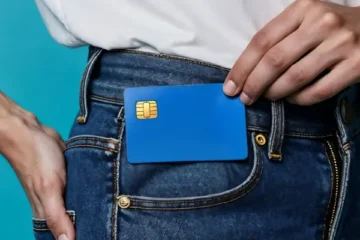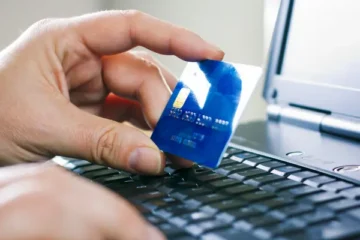Cash or credit? How to use both responsibly
Ever found yourself asking, “Should I pay this in cash or on credit?” That question is more common than you think. And knowing the right answer can make a big difference in your finances and your daily money habits.
Advertisements
Credit cards are convenient. With just a tap or swipe, the transaction is done. But that ease can lead to trouble if you’re not careful. On the flip side, cash may feel old-school, but it remains a powerful way to stay in control of your spending.
Advertisements
Choosing between cash and credit isn’t just a matter of convenience. It’s about how you relate to money, your financial goals, and the discipline you have. In this article, you’ll learn how to use both wisely, get the most out of each, and avoid the common traps that lead to debt or waste.
Which is better: cash or credit?
There’s no one-size-fits-all answer. It really depends on your lifestyle, financial habits, and the context of each purchase. Some people feel more in control when using cash because they physically see the money leaving their hands. Others prefer credit for the convenience, rewards, and flexibility it offers.
Advertisements
The decision is also tied to emotional factors and self-discipline. Cash creates a stronger psychological connection to spending, which can help prevent impulse purchases. Credit cards, on the other hand, can create the illusion that you’re not really spending money, which makes it easier to lose control. Knowing the pros and cons of each can lead to smarter, healthier financial habits.
Pros of using cash
- Makes the cost of a purchase feel more real
- Helps reduce impulse spending
- No interest or hidden fees
- Great for fixed budgets and everyday expenses
Cons of using cash
- Risk of loss or theft
- No points, miles, or cashback benefits
- Harder to track and categorize spending
- Inconvenient for larger or online purchases
When to use cash and when to use credit
Knowing when to use cash or credit can save you a lot of stress. Instead of deciding on the spot, think about the context of the purchase, how much you’re spending, and how it fits into your monthly budget. It’s not about picking a side — it’s about using each tool smartly.

Cash works best for small, quick purchases that were already in your plan. It keeps your spending grounded and avoids surprises. Credit cards are better for bigger purchases, emergencies, or when you can take advantage of rewards like cashback or airline miles — as long as you pay your bill in full.
Use cash when:
- You’re grocery shopping with a set budget
- You’re buying from local vendors or small shops
- You want to limit spending for the week
- You’re saving for something and want to avoid temptation
Use credit when:
- The purchase is larger and installment options help
- You’re traveling and want more safety
- You’re collecting points, cashback, or travel miles
- You need short-term flexibility with a solid repayment plan
How to use credit cards responsibly
Credit cards can be a powerful financial tool. They offer convenience, safety, and even rewards. But when misused, they become a fast track to debt. Just one or two missed payments can lead to high interest charges and a snowball of financial stress.
The key is to treat your credit limit as a ceiling, not a wallet full of free money. Many people get excited about a high limit and start spending as if it’s extra income. That mindset often ends in a shock when the bill comes. Planning your purchases, tracking them, and paying the full amount every month makes all the difference.
Practical tips:
- Always pay your statement in full, not just the minimum
- Use credit only for planned expenses
- Set up spending alerts in your banking app
- Limit the number of cards you use
- Keep your credit limit below your monthly income
- Choose a card that offers cashback or rewards you actually use
Common mistakes to avoid:
- Using credit to cover cash shortages
- Splitting payments just because it’s possible
- Ignoring your bill until the due date
- Thinking your available limit is the same as money in the bank
Consumer habits: What the data says
Financial behavior has shifted a lot in recent years. As digital tools became more common, credit card usage skyrocketed. According to a 2023 report from the Brazilian Card Association (Abecs), over $ 2 trillion was spent on cards in Brazil — an 11% increase from the previous year.
Still, cash hasn’t disappeared. In lower-income areas or among people who prefer a hands-on approach to budgeting, physical money remains strong. A study by Brazil’s Central Bank found that in 2022, about 40% of Brazilians still used cash as their main payment method for purchases under R$ 50.
These numbers show that balance is key. It’s not about which method is better, but how responsibly you use each one to match your lifestyle and goals.
Cash and credit together: How to combine them well
You don’t always have to choose one or the other. The smart move is often to combine both — using each one where it makes the most sense. This strategy lets you get the best of both worlds while reducing the risk of overspending.
A useful trick is to split your monthly budget into two categories: one for everyday cash expenses (like groceries, snacks, or public transport), and the other for planned or larger card purchases. This creates a clear, organized financial routine.
Example of a smart combo:
- $150 in cash: for food, snacks, local travel, daily spending
- $200 on credit: for pharmacy, utility bills, larger planned purchases
At the end of the month, reviewing both categories helps you track where your money goes, identify waste, and avoid unpleasant surprises on your credit statement.
Case Study: Two people, two approaches
To make this more real, let’s look at two different spending profiles: Ana and Rafael.
Ana is a freelancer who likes tight control over her money. Every month, she withdraws a fixed amount in cash and uses it for most things: groceries, transport, meals. She only uses her credit card in emergencies or when she can earn cashback, and she always pays her full statement. Her focus is avoiding debt and building a solid emergency fund.
Rafael, on the other hand, has a steady job and manages everything through his bank’s mobile app. He puts almost everything on his card to earn points and track expenses. He sets monthly limits and gets spending alerts to stay on top. Even though he uses credit more often, he never misses a payment and has a good credit score.
Two different lifestyles, both valid. The key is to understand your financial personality and use the right tools accordingly.
In the end, cash and credit aren’t enemies. They’re just tools. What matters is how you use them. Awareness, planning, and self-control are the foundation of healthy personal finances.
You don’t have to give up your card or rely only on cash. The smartest move is to combine both, take advantage of their strengths, and avoid common traps. Spend with purpose, track everything, and respect your own limits.
Final tip: If you often lose track of your spending, start with more cash to feel the impact. Then, gradually introduce credit with clear goals and a disciplined approach.





